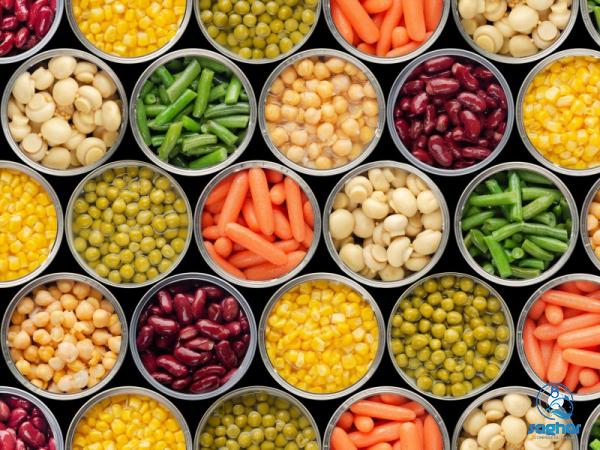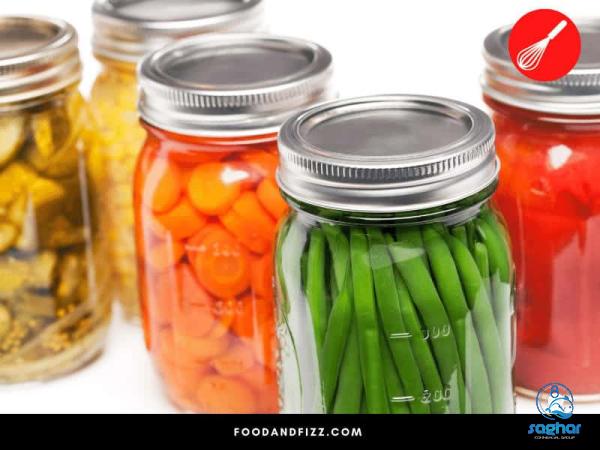Title: The Price of Vegetable Canned Foods: Analyzing the Journey from Production to Consumption Introduction: The global canned vegetable market has witnessed steady growth in recent years, as consumers increasingly turn to convenient and long-lasting food options. Canned vegetables offer a range of benefits, including extended shelf life, ease of storage, and availability year-round. However, understanding the factors that influence the price of vegetable canned foods, from production to consumption, requires an in-depth analysis of various components along the supply chain. This article aims to explore these factors and provide insights into the pricing dynamics of vegetable canned foods. 1. Production Costs: The first step in understanding the price of vegetable canned foods is to examine the costs associated with their production. These costs can be divided into several categories, including: a. Farming and Harvesting: Farmers often incur expenses such as land acquisition, labor wages, seeds, fertilizers, and pesticides during the cultivation of vegetables. The efficiency and productivity of farming practices significantly affect production costs.

Canned foods
 b. Processing: Once harvested, vegetables undergo washing, trimming, sorting, and blanching processes before canning. These processing costs include labor, energy, machinery, and packaging materials. c. Can Manufacturing: Another crucial factor is the cost of manufacturing the cans themselves. Metal or aluminum cans are commonly used for vegetable canning. Variables such as raw material prices, labor wages, and energy costs impact can production expenses. 2. Transportation and Logistics Costs: After processing, the next stage of the price journey involves transportation and logistics. Several factors play a role in determining the cost of transporting vegetable canned foods: a. Distance: The longer the distance between the production site and the consumption market, the higher the transportation costs. Expenses include fuel, vehicle maintenance, and labor. b. Mode of Transportation: Different transportation modes, such as road, rail, sea, or air, come with varying costs. The choice of mode depends on factors like distance, speed, and perishability of the products. c. Packaging and Storage: Proper packaging and storage solutions are vital to maintain the quality and freshness of vegetable canned foods during transportation. Packaging materials, refrigeration, and warehousing costs contribute to overall logistics expenses.
b. Processing: Once harvested, vegetables undergo washing, trimming, sorting, and blanching processes before canning. These processing costs include labor, energy, machinery, and packaging materials. c. Can Manufacturing: Another crucial factor is the cost of manufacturing the cans themselves. Metal or aluminum cans are commonly used for vegetable canning. Variables such as raw material prices, labor wages, and energy costs impact can production expenses. 2. Transportation and Logistics Costs: After processing, the next stage of the price journey involves transportation and logistics. Several factors play a role in determining the cost of transporting vegetable canned foods: a. Distance: The longer the distance between the production site and the consumption market, the higher the transportation costs. Expenses include fuel, vehicle maintenance, and labor. b. Mode of Transportation: Different transportation modes, such as road, rail, sea, or air, come with varying costs. The choice of mode depends on factors like distance, speed, and perishability of the products. c. Packaging and Storage: Proper packaging and storage solutions are vital to maintain the quality and freshness of vegetable canned foods during transportation. Packaging materials, refrigeration, and warehousing costs contribute to overall logistics expenses.
Specifications of canned food
 3. Government Regulations and Trade Policies: Government regulations and trade policies play a significant role in influencing the price of vegetable canned foods. These include: a. Tariffs and Duties: Import or export tariffs and duties imposed by governments can have a substantial impact on the price of canned vegetables, particularly when it comes to international trade. b. Quality Standards and Certifications: Governments often enforce strict quality control measures on canned foods. Compliance with these standards incurs additional costs, which can be reflected in the product price. c. Subsidies and Incentives: Government subsidies and incentives provided to farmers or canning facilities can influence the cost of production. These subsidies may vary across different countries, affecting the final price of canned vegetables. 4. Branding and Marketing Costs: Branding and marketing efforts contribute to the overall price of vegetable canned foods. Companies invest in advertising, promotions, and packaging design to differentiate their products from competitors. These costs are often passed on to consumers. a. Advertising and Promotions: Companies allocate budgets for advertising campaigns, both traditional and digital, to create brand awareness and promote their vegetable canned products.
3. Government Regulations and Trade Policies: Government regulations and trade policies play a significant role in influencing the price of vegetable canned foods. These include: a. Tariffs and Duties: Import or export tariffs and duties imposed by governments can have a substantial impact on the price of canned vegetables, particularly when it comes to international trade. b. Quality Standards and Certifications: Governments often enforce strict quality control measures on canned foods. Compliance with these standards incurs additional costs, which can be reflected in the product price. c. Subsidies and Incentives: Government subsidies and incentives provided to farmers or canning facilities can influence the cost of production. These subsidies may vary across different countries, affecting the final price of canned vegetables. 4. Branding and Marketing Costs: Branding and marketing efforts contribute to the overall price of vegetable canned foods. Companies invest in advertising, promotions, and packaging design to differentiate their products from competitors. These costs are often passed on to consumers. a. Advertising and Promotions: Companies allocate budgets for advertising campaigns, both traditional and digital, to create brand awareness and promote their vegetable canned products.
buy canned food
 b. Packaging Design: Attractive and functional packaging designs can enhance the perceived value of the product. Costs related to packaging materials, labeling, and graphic design influence the product’s price. 5. Retail Markup and Consumer Demand: Finally, the retail markup and consumer demand factor into the pricing of vegetable canned foods: a. Retail Markup: Retailers add a markup to the wholesale price they pay for canned vegetables to cover their operating costs and earn a profit. The markup can vary depending on factors like location, competition, and product demand. b. Consumer Demand: The demand for canned vegetables significantly affects pricing. Factors such as consumer preferences, dietary trends, and economic conditions influence the demand for these products, leading to price fluctuations. Conclusion: The price of vegetable canned foods is influenced by various factors throughout the supply chain, from production to consumption. Understanding the production costs, transportation and logistics expenses, government regulations, branding and marketing efforts, and retail markup allows us to gain insights into the pricing dynamics of vegetable canned foods. By recognizing these factors, consumers can make informed decisions, and businesses can optimize their pricing strategies to meet market demands effectively.
b. Packaging Design: Attractive and functional packaging designs can enhance the perceived value of the product. Costs related to packaging materials, labeling, and graphic design influence the product’s price. 5. Retail Markup and Consumer Demand: Finally, the retail markup and consumer demand factor into the pricing of vegetable canned foods: a. Retail Markup: Retailers add a markup to the wholesale price they pay for canned vegetables to cover their operating costs and earn a profit. The markup can vary depending on factors like location, competition, and product demand. b. Consumer Demand: The demand for canned vegetables significantly affects pricing. Factors such as consumer preferences, dietary trends, and economic conditions influence the demand for these products, leading to price fluctuations. Conclusion: The price of vegetable canned foods is influenced by various factors throughout the supply chain, from production to consumption. Understanding the production costs, transportation and logistics expenses, government regulations, branding and marketing efforts, and retail markup allows us to gain insights into the pricing dynamics of vegetable canned foods. By recognizing these factors, consumers can make informed decisions, and businesses can optimize their pricing strategies to meet market demands effectively.

Your comment submitted.